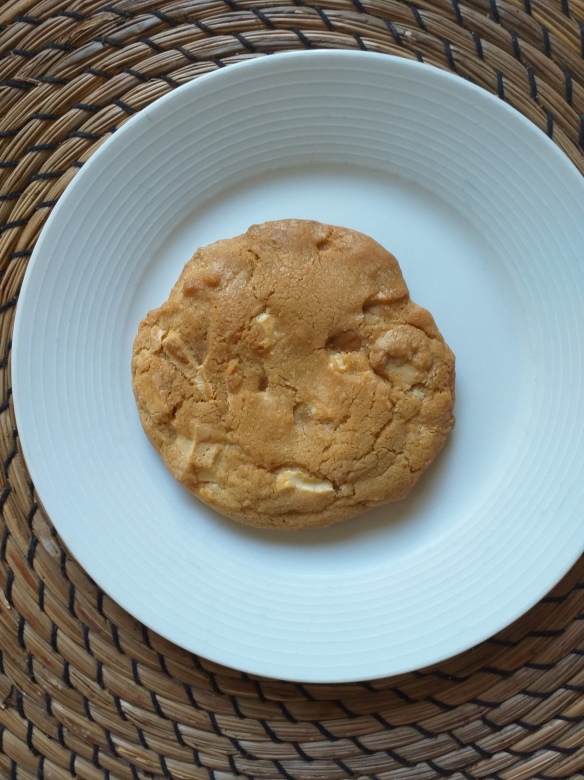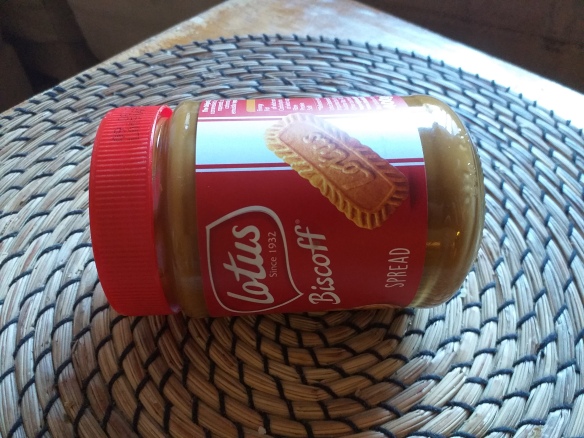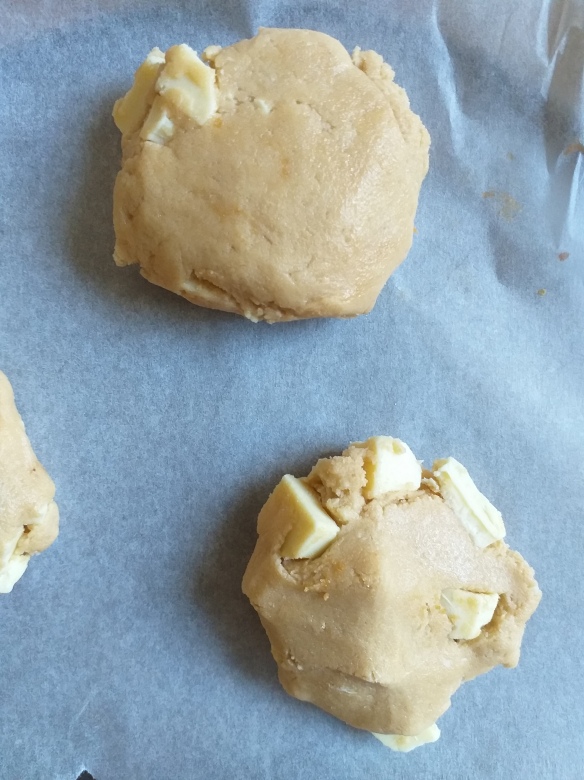
I love Lotus Biscoff, those caramelized biscuits that are often dished out in fancy cafes. A Belgian staple since 1932, the name is a combination of “biscuit” and “coffee” – genius!
I also love the fact that Lotus bakeries have made a spread out of the squashed biscuits – it’s really delicious on toast and vegan-friendly too.

But having a slightly twisted mind, I decided it would be great fun to turn a spread made out of biscuits, back into a biscuit.
I have had a few trial runs and made the following observations:
- Use a mixer. I usually cannot be bothered to get my free standing mixer out of the cupboard, as it weighs an absolute ton, but for these biscuits, it is vital that the butter and sugar creaming stage is intensive, so the mixture turns pale. Doing this by hand would be quite the palaver.
- Do use light brown sugar. It helps the biscuits keep their shape. You can substitute for other sugars, but be aware that the cookies may spread and not be as beautiful
- Don’t be tempted to put too much Biscoff spread into each cookie – they will split
- Use a plain cookie dough. I made a version with cocoa powder and it slightly overpowered the Biscoff taste
- Do use white chocolate. Milk and dark chocolate will also eclipse the Biscoff taste.
- You must freeze the Biscoff spread first and get it out at the very last minute to put into the cookies
- Don’t bake the cookies for too long. They should look slightly underdone when you remove them from the oven, as they continue to cook once on the cooling tray
Meta Cookies
Half a jar of Lotus Biscoff spread
175g light brown sugar
120g butter. I use unsalted, but salted would be fine too
1 egg
1 tsp vanilla extract
200g white chocolate, chopped into small chunks
275g plain flour
1/2 tsp bicarbonate of soda
1 tbsp cornflour
Line a baking tray with greaseproof baking parchment. Using a teaspoon, drop 15 blobs of Lotus Biscoff spread across the paper. Cover with another piece of parchment and place in the freezer for 30 minutes to 1 hour.
Preheat the oven to 170C
Using a free standing mixer or a hand mixer, cream the butter and sugar together until the mixture is several shades paler than when you started and the texture is light and fluffy.
Beat the egg and vanilla extract together in a small bowl. Add to the butter and sugar and mix in.
Add the flour, cornflour and bicarbonate of soda to the mix. Stir it in slowly at first, so your kitchen doesn’t get sprayed with white powder. Increase the mixer speed until all the flour is mixed in and you have a smooth dough.
Stir the chocolate chunks in by hand and place the dough in the fridge to chill for 5 minutes.
Remove the dough and Biscoff spread blobs from their respective cold areas. Line two/three large baking trays with parchment. You can use the parchment that went in the freezer, if you are feeling thrifty.
Take a tablespoon of cookie dough and wrap it around a frozen blob of Biscoff spread. Place it on the baking tray – it should look a little like a golf ball. Try to keep a distance of about 2 centimetres between cookies. You may need a third tray for the last couple.

Put the cookies in the oven and bake for 10 -12 minutes. They should be pale but firm. If you prefer very crunchy cookies, you may leave them for 13-14 minutes.
Put on a cooling tray and allow to cool a little before devouring. Warning, the Biscoff centre will be lava hot!
